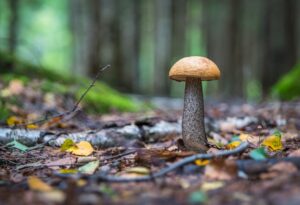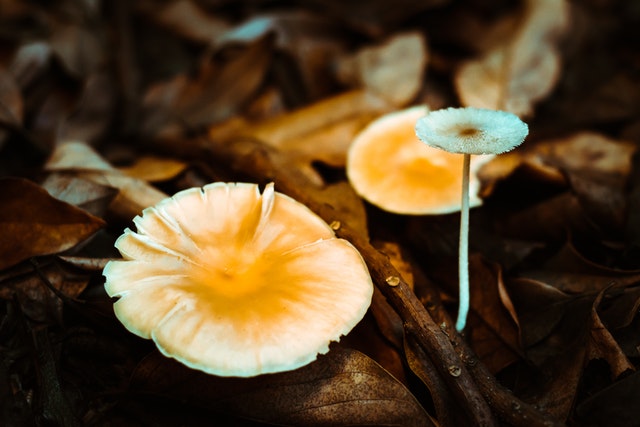If you remember your last visit to a forest, you might have seen some trees, birds, and an occasional wild animal. However, just hidden away from plain sight, under the soil, there lies a complex network of microscopic fungi. These fungi find its home below the soil, leaves, and moss. Additionally, it is intertwined with the roots of the trees, connecting them together.
When you ask anyone about fungus, they might recollect seeing mushrooms sprouting from the ground. However, we often don’t realize that they are just the ‘fruit’ of the fungal network. In fact, the majority of the fungi exists in the soil as a vast network of mycelium.
Mycelium are small ‘threads’ belonging to the greater fungal organism that bore right into the roots of trees. Collectively, the mycelium form what is known as the “mycorrhizal network”. This network is responsible for connecting various plants together to help transfer water, nitrogen, carbon along with other nutrients between each other. According to German forester Peter Wohlleben, this network can simply be called ‘Wood Wide Web’ considering that the mycelium network ‘communicates’ through this.
When talking about a healthy forest, every tree is connected to the other through this fungal network. It is through this network that they share information and nutrients with each other. For instance, saplings that are growing in a dense patch with less sunlight will end up dying out as they are unable to perform photosynthesis. However, through the mycelium network, they are able to receive nutrients and sugar from trees that are a lot older.

According to a study conducted on Douglas-fir trees by the University of Reading, they have the ability to recognize the root tips of their relatives. These trees also ‘favor’ their relatives while passing around nutrients through the mycelium network
According to Ecologist Suzanne Simard, this network exists between trees only to secure their own source of carbon. The network further ensures that the trees that are connected together are kept alive and healthy. In return, the mycorrhizal network takes up around 30% of the sugar from the trees undergoing photosynthesis. This sugar helps to fuel the fungi and collects mineral nutrients such as phosphorus which are then transferred to trees through root tips.
A linchpin in the tree-fungi is also referred to as ‘mother trees’ considering they are older and more seasoned as compared to other trees in the forest. These trees often have the most number of fungal connections as their roots are found deeper in the soil. These roots help to reach deep sources of water which they pass on to younger saplings. Also, because of the fungal network, these mother trees are able to sense if a neighbouring tree is unhealthy and sends them the required nutrients.
Therefore, it is not difficult to imagine that a complex symbiotic relationship exists between trees which ensures their survival. The mycorrhizal network plays a key role to improve this connectivity. Even though the fungi are basically motivated by their own self interest, they end up boosting the health and survival of the forests that they connect.
The next time you visit a forest and spend your time wandering around trees, just take a moment to appreciate the vast network and complex exchanges that are taking place right beneath your two feet.




